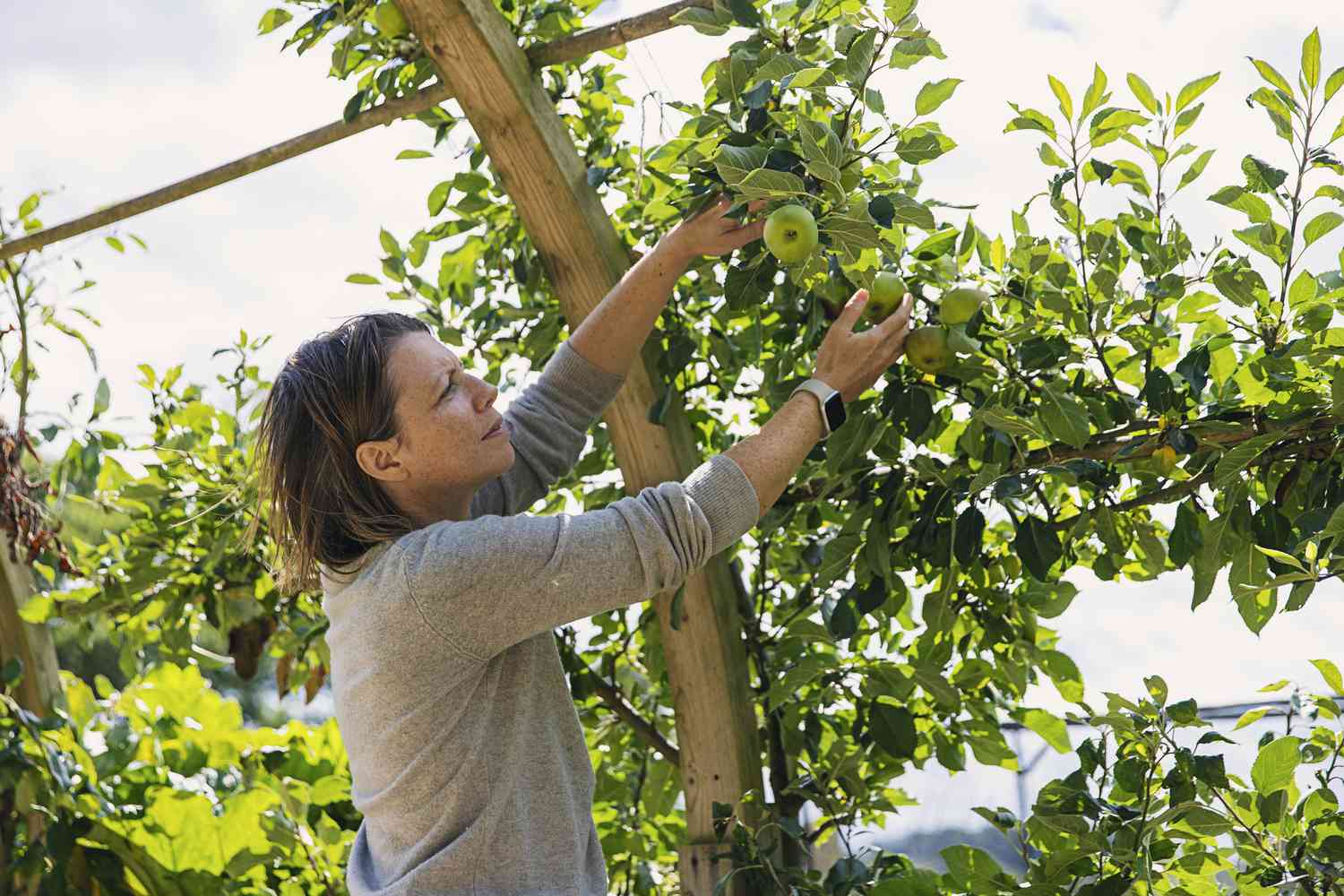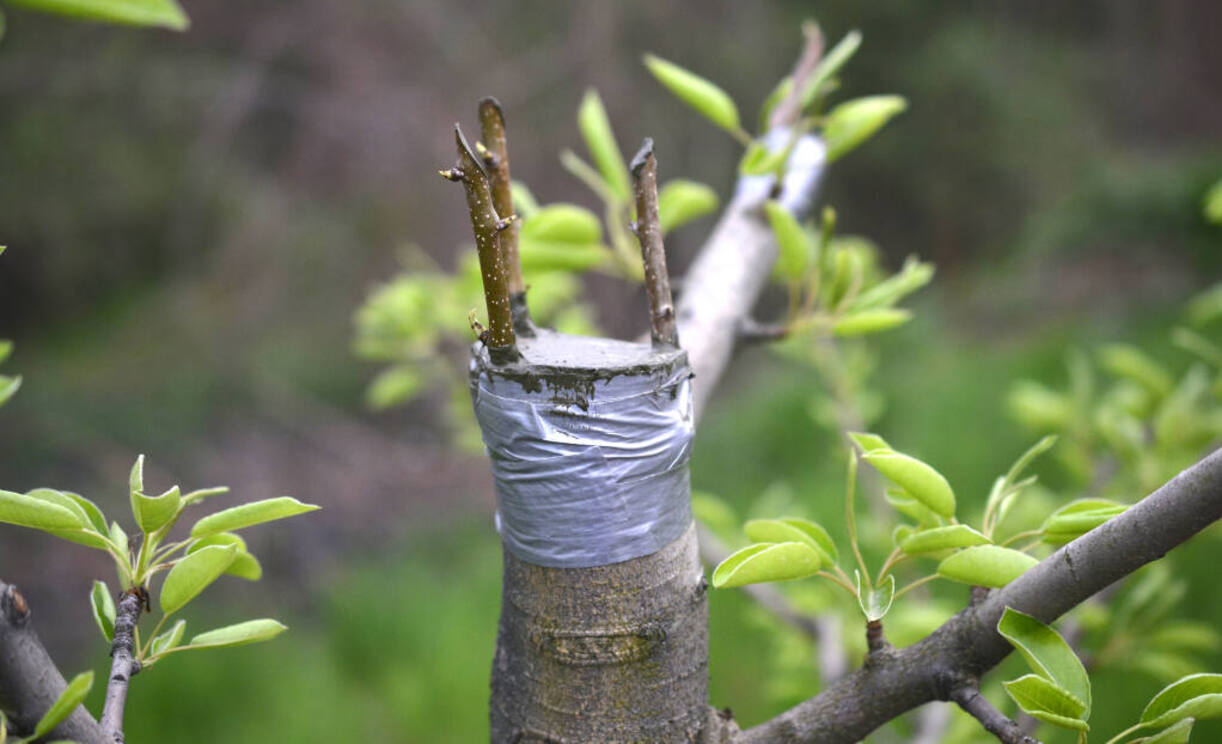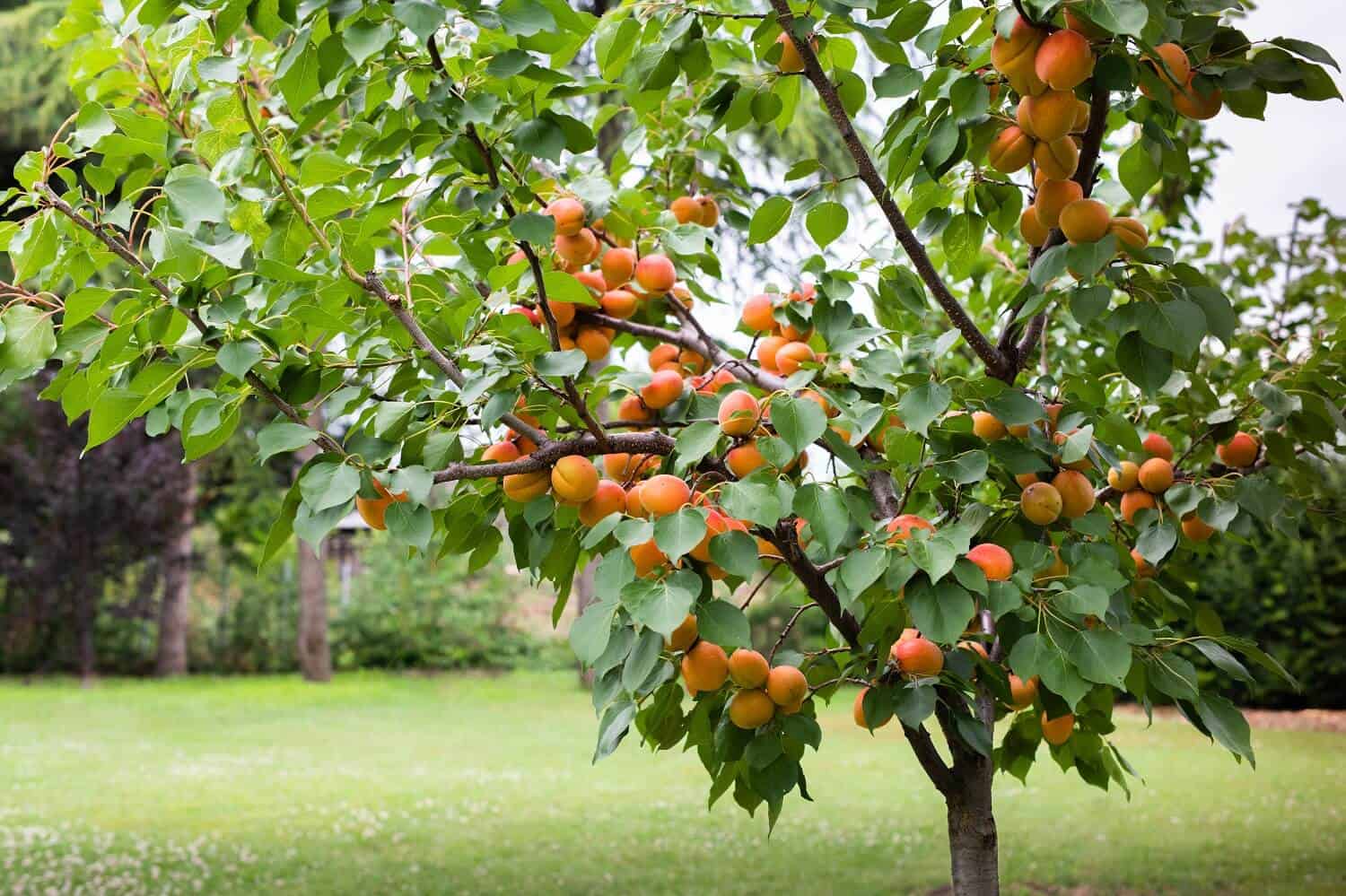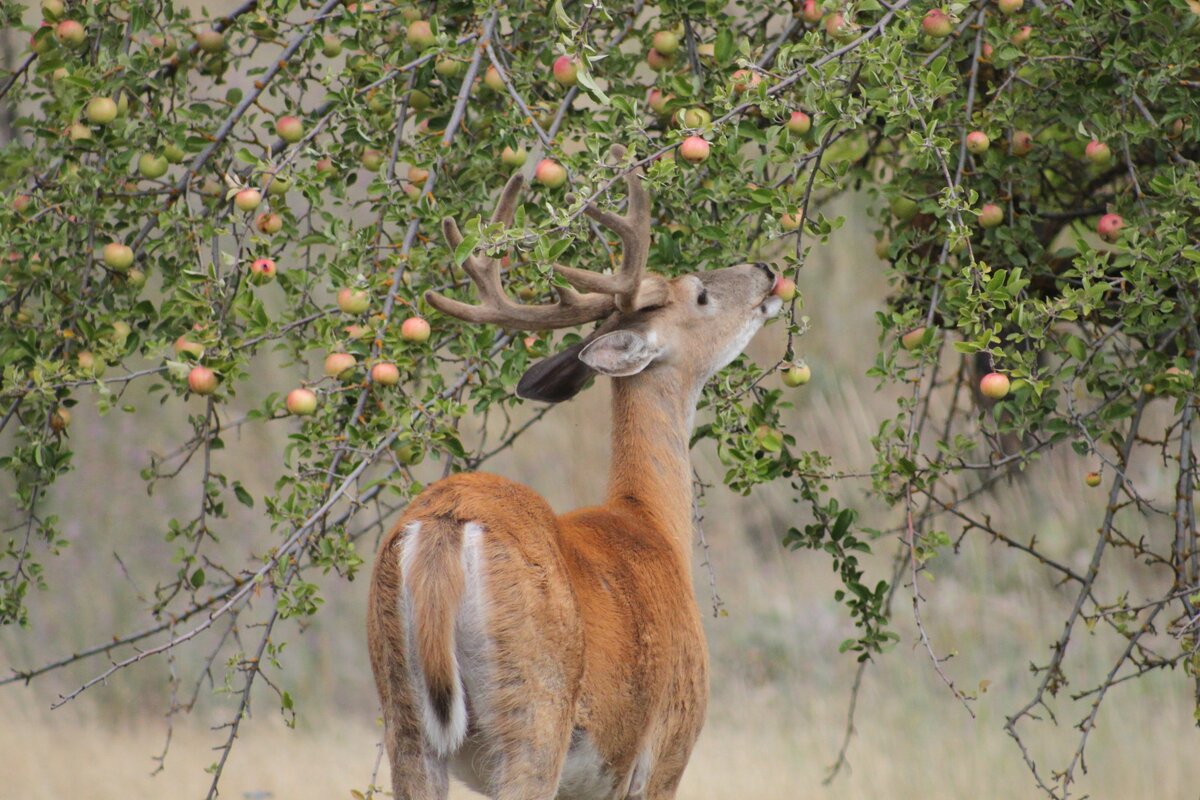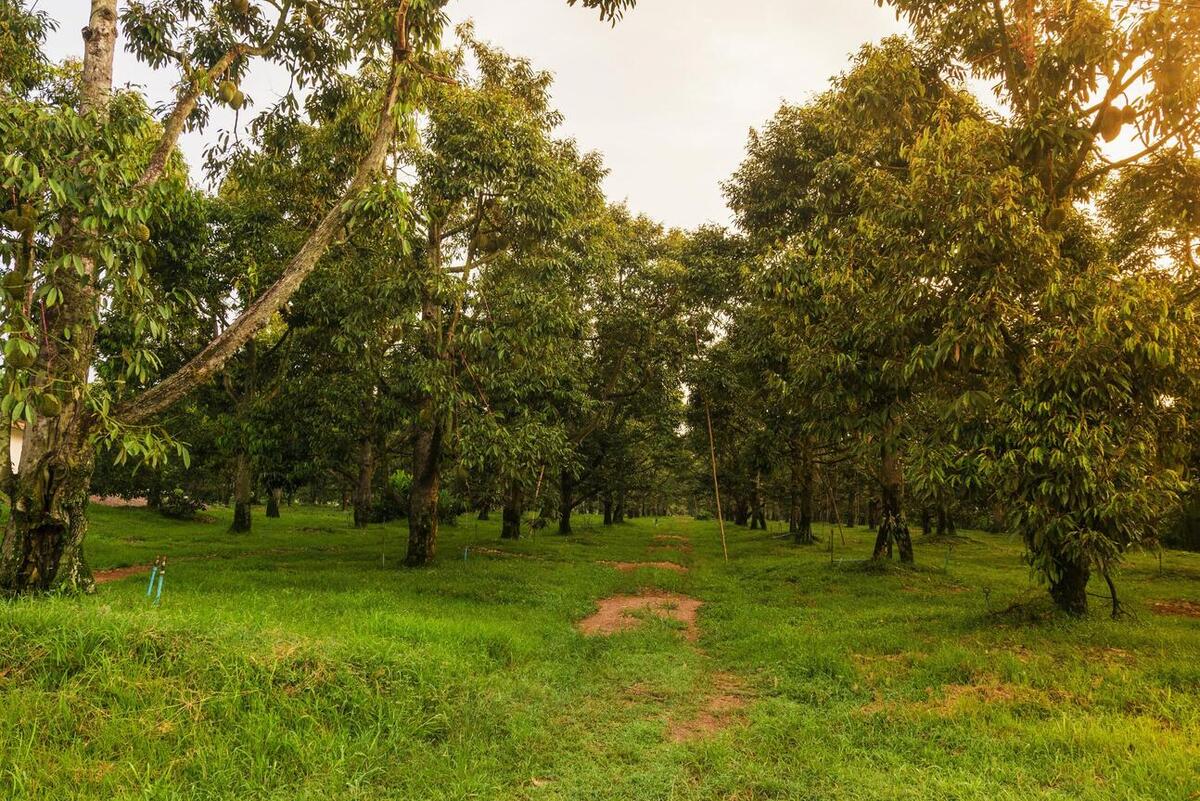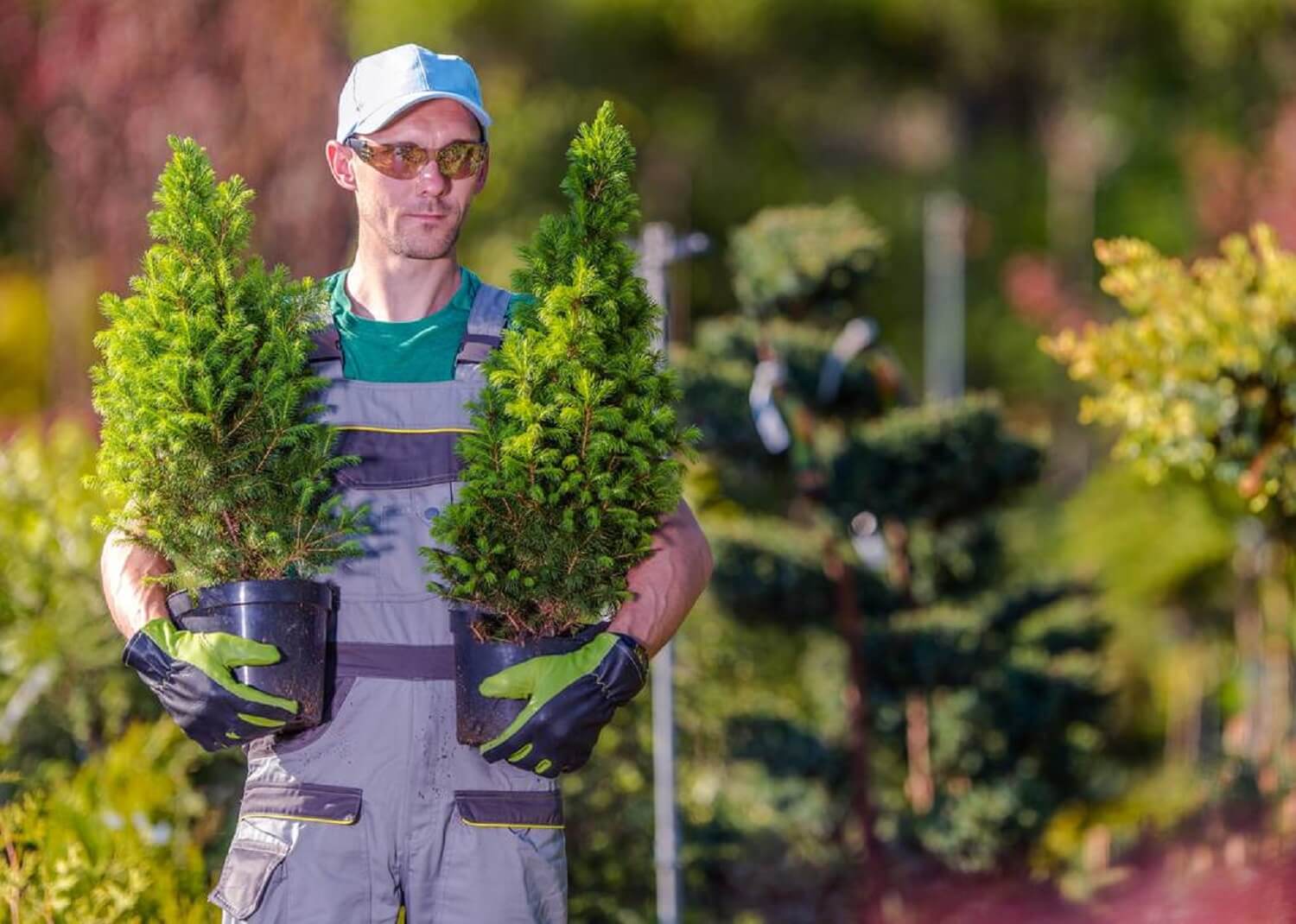Home>Gardening Tips and Tricks>Problem Solving>How To Keep Squirrels Out Of Fruit Trees
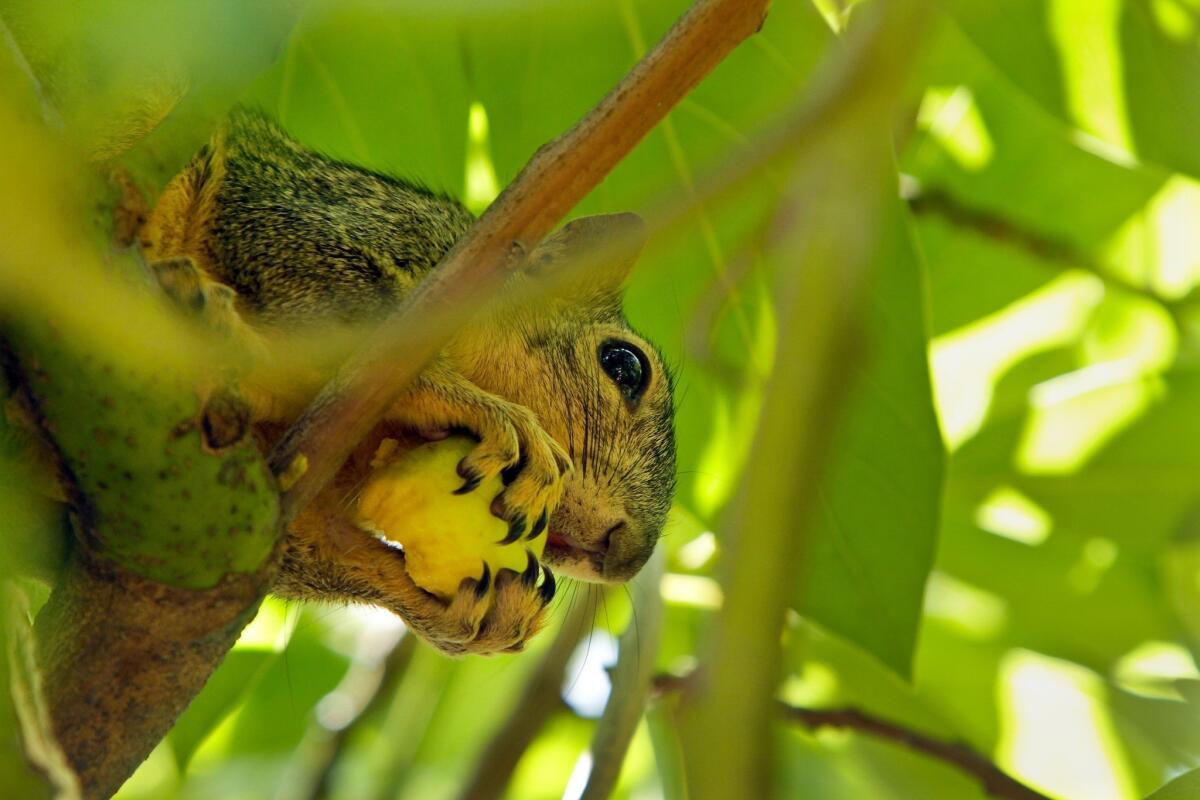

Problem Solving
How To Keep Squirrels Out Of Fruit Trees
Modified: January 22, 2024
Looking for effective solutions to keep squirrels out of your fruit trees? Discover problem-solving techniques and tips in this comprehensive guide.
(Many of the links in this article redirect to a specific reviewed product. Your purchase of these products through affiliate links helps to generate commission for Chicagolandgardening.com, at no extra cost. Learn more)
Table of Contents
- Introduction
- Understanding the Behavior of Squirrels
- Identifying Common Types of Fruit Trees
- Assessing the Vulnerability of Fruit Trees to Squirrel Damage
- Creating Physical Barriers
- Installing Tree Collars or Traps
- Using Repellents and Deterrents
- Pruning Techniques to Deter Squirrels
- Harvesting Techniques to Reduce Squirrel Attraction
- Maintaining a Tidy Garden
- Conclusion
Introduction
Welcome to the world of fruit trees, where the sweet and juicy rewards of your gardening efforts await. However, if you’ve ever faced the frustrating challenge of squirrels ravaging your fruit trees, you know just how heartbreaking it can be to watch your harvest disappear before it has a chance to ripen. Don’t despair! In this article, we’ll explore effective strategies for keeping squirrels out of your fruit trees, allowing you to enjoy the fruits of your labor.
Squirrels are notorious for their ability to quickly locate and devour ripe and unripe fruit. Their agile nature, sharp claws, and sharp teeth provide them with the perfect tools to raid your fruit trees with ease. This behavior can not only ruin your harvest but also damage the trees themselves. Understanding squirrel behavior and the vulnerabilities of your fruit trees is key to implementing successful prevention measures.
Before we delve into actionable solutions, it is essential to identify the common types of fruit trees you may have in your garden. Apples, pears, peaches, plums, cherries, and citrus fruits are among the most popular choices for home gardeners. Knowing the specific characteristics and growth habits of your fruit trees will aid in devising effective strategies to protect them.
Once you have identified your fruit trees, it’s important to assess their vulnerability to squirrel damage. Factors such as tree size, location, and surrounding environment can play a significant role in attracting or deterring squirrels. By evaluating these factors, you can determine the most appropriate methods for safeguarding your fruit trees.
In the following sections, we will explore various strategies to keep squirrels at bay. These include creating physical barriers, installing tree collars or traps, using repellents and deterrents, implementing pruning techniques, practicing effective harvesting techniques, and maintaining a tidy garden. Let’s dive in and arm ourselves with effective methods to protect our fruit trees from those pesky squirrels!
Understanding the Behavior of Squirrels
Before we can effectively keep squirrels out of our fruit trees, it’s important to gain some insight into their behavior and habits. Squirrels are highly adaptable creatures that can cause significant damage to our gardens if left unchecked.
Squirrels are known for their incredible agility and acrobatic abilities. They can jump from trees to roofs and run along power lines with ease. These traits make them highly skilled at accessing fruit trees and foraging for food. Understanding how squirrels navigate their environment is crucial for devising effective prevention strategies.
Squirrels are predominantly active during the day, especially in the early morning and late afternoon. They are opportunistic feeders and have a keen sense of smell, allowing them to easily locate sources of food. They primarily feed on nuts, seeds, fruits, and vegetables, making our fruit trees an enticing target.
In their search for food, squirrels tend to follow repeated patterns and routes. They often traverse the same pathways through trees, along fences, and over rooftops. By observing their movement patterns, we can identify potential areas of vulnerability and strategically place deterrents or barriers.
It’s important to note that squirrels are intelligent creatures and can quickly adapt to new situations. They may attempt different approaches and strategies to gain access to your fruit trees. Therefore, it’s crucial to implement a combination of preventive measures to stay one step ahead of them.
Squirrels are also known for their nesting behavior. During the breeding season, female squirrels search for secure nesting spots, which can include the branches and hollows of fruit trees. By focusing on deterring squirrels from nesting in our trees, we can reduce the likelihood of them causing damage and seeking out our delicious fruits.
As we delve into the strategies to protect our fruit trees, remember that a combination of knowledge about squirrel behavior and effective prevention methods will provide the best results. Now that we understand the actions and habits of squirrels, let’s explore the various techniques we can use to keep them out of our precious fruit trees.
Identifying Common Types of Fruit Trees
Before we can effectively protect our fruit trees from squirrel damage, it’s important to be able to identify the common types of fruit trees that we may have in our garden. Each type of fruit tree has its own unique characteristics and vulnerabilities, and understanding these will help us tailor our prevention strategies.
Here are some of the most common types of fruit trees that you may encounter:
- Apple trees: Apple trees are known for their distinctive shape and clusters of round fruits. They come in various varieties, each with its own flavor and maturation time. Apples are a favorite of squirrels due to their abundant supply, so protecting apple trees is vital.
- Pear trees: Pear trees can be easily recognized by their elongated, pear-shaped fruits. They require a specific climate and soil conditions to thrive. Squirrels are attracted to both ripe and unripe pears, so protective measures are necessary.
- Peach trees: Peach trees have recognizable fuzzy fruits with a vibrant color range. They are highly susceptible to squirrel damage, as squirrels enjoy both the juicy flesh and the sweet scent of peaches.
- Plum trees: Plum trees produce small, round fruits with a smooth skin. They are a favorite snack for squirrels due to their juicy and flavorful pulp. Plum trees are often targeted by squirrels, so protective measures are important.
- Cherry trees: Cherry trees are known for their beautiful blossoms and delicious fruits. Squirrels are particularly fond of cherries, both sweet and sour varieties. Their small size and vibrant color make them an easy target for squirrels.
- Citrus trees: Citrus trees, such as orange, lemon, and lime trees, produce aromatic fruits rich in vitamin C. These trees are typically more resistant to squirrel damage due to their thick rinds, but squirrels may still be tempted to nibble on the fruit.
By identifying the types of fruit trees in your garden, you can gain a better understanding of the specific challenges they may face. This will enable you to customize your preventive measures based on each tree’s vulnerabilities. Remember that squirrel damage is not limited to these fruit trees alone, so it’s important to stay vigilant and apply preventive measures to any tree at risk.
Now that we’ve familiarized ourselves with the common types of fruit trees, we can move on to assessing the vulnerability of these trees and determining the best methods to safeguard them from squirrel damage.
Assessing the Vulnerability of Fruit Trees to Squirrel Damage
As we work towards protecting our fruit trees from squirrel damage, it is essential to assess their vulnerability to determine the most effective preventive measures. Several factors contribute to the susceptibility of fruit trees, and understanding these factors will help us devise a targeted and comprehensive protection plan.
Here are some key factors to consider when assessing the vulnerability of your fruit trees:
- Tree size: Smaller fruit trees are more easily accessed by squirrels than larger ones. Squirrels can jump from nearby structures or tree branches to reach the fruits. Consider the size of your trees and plan for appropriate preventive measures accordingly.
- Location: The location of your fruit trees can significantly impact their vulnerability. Trees located closer to other trees, fences, or structures can provide easy access for squirrels. Assess the proximity of potential entry points and take measures to block them off.
- Fruit availability: The stage of fruit development determines its desirability to squirrels. Ripe and unripe fruits are equally enticing, so you must protect your fruit trees throughout the growing season.
- Surrounding environment: Assess the overall environment around your fruit trees. Overhanging branches and nearby structures like fences or buildings can provide squirrels with easier access points. Make note of potential routes and strategize prevention methods accordingly.
- Previous damage: Consider any past squirrel damage to your fruit trees. If you’ve already encountered issues in previous seasons, it’s likely that squirrels will continue to target those trees. Special attention and enhanced preventive measures may be necessary in these cases.
By thoroughly evaluating these factors, you can gain valuable insights into the vulnerabilities of your fruit trees. This knowledge will help you make informed decisions about the most effective methods of protection. It’s important to note that no single solution works universally for all fruit trees, so a combination of prevention techniques tailored to each tree’s unique characteristics is crucial.
Now that we have assessed the vulnerability of our fruit trees, we can move on to implementing specific preventive measures. In the following sections, we will explore various strategies to keep squirrels at bay and safeguard our bountiful harvest.
Creating Physical Barriers
One effective approach to keep squirrels out of our fruit trees is by creating physical barriers that prevent their access. These barriers can be highly effective in protecting the trees and preserving the harvest. Let’s explore some of the most common physical barriers that you can implement:
- Fencing: Installing a sturdy fence around your fruit trees can be an excellent deterrent for squirrels. Choose a fence with small gauge wire mesh that squirrels cannot squeeze through. Ensure that the fence is tall enough to prevent squirrels from leaping over it. Additionally, bury the bottom of the fence several inches underground to deter digging.
- Netting: Covering your fruit trees with netting is another effective method to prevent squirrel access. Use a fine mesh netting that is specifically designed for fruit tree protection. Secure the netting tightly around the tree trunk to prevent squirrels from entering. Be mindful of leaving enough space for tree growth and airflow.
- Cages: Building cages around individual fruit trees is a more targeted approach to protect your harvest. Construct a sturdy cage using wire mesh or chicken wire. Ensure that the cage is tall enough and extends underground to prevent squirrels from burrowing underneath.
- Collars: Tree collars made of metal or plastic can be installed around the trunk of the fruit tree to create a physical barrier. These collars prevent squirrels from climbing up the tree trunk and accessing the branches. Ensure that the collars are securely fastened and extend at least three feet above the ground.
When implementing these physical barriers, it’s crucial to ensure they are properly installed and well-maintained. Regularly check for any gaps, tears, or loose sections that squirrels may exploit. Additionally, be mindful of the tree’s growth and adjust the barriers accordingly to accommodate it.
Remember to consider the aesthetics of your garden when choosing these physical barriers. Opt for materials and designs that blend seamlessly with the surroundings and do not detract from the beauty of your fruit trees.
While physical barriers can be highly effective, they may not always be practical or feasible in every situation. If circumstances prevent you from installing physical barriers, don’t worry. There are other preventive measures that you can implement. In the following sections, we will explore additional strategies to keep squirrels away from your fruit trees.
Installing Tree Collars or Traps
When it comes to protecting fruit trees from squirrels, installing tree collars or traps can be an effective method to deter them from climbing and accessing the tree. These devices create physical barriers and can help minimize squirrel damage. Let’s explore how you can utilize tree collars or traps to safeguard your fruit trees.
Tree Collars:
Tree collars are specially designed barriers that are installed around the trunk of the fruit tree. They effectively prevent squirrels from climbing up the trunk and accessing the branches. Here’s how you can install tree collars:
- Choose a collar made of metal or sturdy plastic that is the appropriate size for your tree trunk.
- Position the collar around the base of the trunk, ensuring that it fits snugly and is securely fastened.
- Make sure the collar extends at least three feet above the ground to prevent squirrels from gaining a foothold.
- Regularly inspect the collar for any signs of damage or wear. Replace any worn or damaged collars to maintain their effectiveness.
Tree collars are an excellent option if you have a limited number of fruit trees and want a targeted solution to protect them from squirrel damage. They are relatively easy to install and can be a cost-effective method as well.
Traps:
Traps can also be utilized to catch squirrels and prevent them from causing harm to your fruit trees. There are two main types of traps that you can consider:
- Live traps: Live traps are designed to capture squirrels without causing them harm. Place the trap near the tree or in areas where squirrels are commonly seen. Bait the trap with squirrel-friendly food such as nuts or seeds. Check the trap regularly and release any trapped squirrels at least a mile away from your property.
- Kill traps: Kill traps, such as snap traps or traps that use lethal bait, are specifically designed to eliminate squirrels. These traps should be used with caution and in compliance with local regulations. If opting for kill traps, follow the manufacturer’s instructions carefully and prioritize safety.
When using traps, it’s important to regularly monitor and remove any trapped squirrels to maintain the effectiveness of the method. Be aware of local regulations and restrictions regarding the use of traps, and always prioritize the humane treatment of animals.
By utilizing tree collars or traps, you can create additional barriers and deter squirrels from climbing and accessing your fruit trees. However, keep in mind that these methods should be used in conjunction with other prevention strategies for optimal results.
Now that we have explored the use of tree collars and traps, let’s move on to other preventive measures, such as the use of repellents and deterrents.
Using Repellents and Deterrents
When it comes to deterring squirrels from your fruit trees, using repellents and deterrents can be an effective and environmentally-friendly approach. These methods work by creating unappealing or intimidating conditions for squirrels, discouraging them from approaching your trees. Let’s explore some of the most common repellents and deterrents you can utilize.
1. Scent-based Repellents:
Squirrels have a strong sense of smell, and certain scents can be highly effective in repelling them. Here are a few scent-based repellents to consider:
- Pepper-based repellents: Spraying a mixture of water and hot pepper sauce on the fruit trees can create a strong scent deterrent for squirrels. The spicy scent is unpleasant to them, causing them to avoid the treated area.
- Mint or garlic: Squirrels are also deterred by the strong scent of mint or garlic. Placing mint leaves or garlic cloves around the base of the tree or hanging sachets of dried mint or garlic can help repel squirrels.
Remember to reapply these scent-based repellents regularly, especially after rain or heavy watering, to ensure their effectiveness.
2. Sound and Visual Deterrents:
Squirrels are skittish creatures that are easily deterred by unexpected noises and movements. Here are a few techniques to consider:
- Wind chimes or aluminum foil strips: Hanging wind chimes or strips of aluminum foil near your fruit trees can create unexpected sounds and movements, scaring off squirrels.
- Predator decoys: Placing decoys of natural squirrel predators, such as owls or snakes, near your fruit trees can intimidate squirrels and discourage them from approaching.
- Ultrasonic devices: Ultrasonic devices emit high-frequency sounds that are imperceptible to human ears but can be highly irritating to squirrels. Install these devices near your fruit trees to create an uncomfortable environment for them.
Be sure to vary the locations and types of deterrents used to prevent squirrels from growing accustomed to them.
3. Repellent Sprays:
Commercially available squirrel repellent sprays can be an effective tool in deterring squirrels. These sprays typically contain natural substances that produce an unpleasant taste or smell for squirrels. Follow the instructions provided by the manufacturer when applying these repellents to avoid damaging the fruit or tree.
It’s important to note that while repellents and deterrents can be effective, their success may vary. Squirrels are intelligent and adaptable, so it may be necessary to combine multiple methods and regularly switch up your deterrent strategies to maintain their effectiveness.
By using repellents and deterrents, you can create an environment that is uninviting and intimidating to squirrels, reducing their interest in your fruit trees. However, it’s essential to remain persistent and implement other preventive measures to ensure the best possible results.
Next, we will explore pruning techniques that can help deter squirrels from accessing your fruit trees.
Pruning Techniques to Deter Squirrels
Pruning techniques can be utilized as a proactive approach to deter squirrels from easily accessing your fruit trees. By modifying the structure and growth patterns of the trees, you can make it more challenging for squirrels to navigate and reach the fruits. Let’s explore some pruning techniques that can help deter squirrels.
1. Limb Pruning:
Start by pruning any branches that are in close proximity to structures like fences, walls, or other trees. Squirrels can use these adjoining structures as bridges to access the fruit trees. By removing or trimming these overhanging branches, you create a gap that squirrels must navigate, discouraging their entry.
2. Canopy Thinning:
Thinning out the canopy of a fruit tree can make it more challenging for squirrels to move around within the tree. Prune away excess branches and foliage to increase the visibility and airflow within the tree. This not only makes it harder for squirrels to navigate, but also allows for better sunlight penetration, promoting healthy fruit growth.
3. Lower Branch Pruning:
Squirrels often gain access to fruit trees by climbing up from the ground and jumping onto low-hanging branches. To discourage this, prune the lower branches of the tree. By raising the lowest branches several feet off the ground, you create a barrier that squirrels must overcome to access the canopy. This can deter them from attempting to climb the tree in the first place.
4. Strategic Pruning:
Observe the movement patterns of squirrels in your garden and prune strategically. By selectively pruning branches that squirrels commonly use to access the tree, you can disrupt their preferred routes. This forces them to find alternative paths or makes it more difficult for them to reach the fruits. Observing and adjusting your pruning techniques over time can help refine their effectiveness.
It’s important to note that while pruning can be an effective deterrent, it should be done with caution and proper techniques to avoid damaging the tree or impeding its overall health. Consult pruning guides or seek guidance from a professional arborist if you are unsure about the appropriate pruning methods for your specific fruit trees.
By employing these pruning techniques, you can create barriers and modify the growth patterns of your fruit trees, making them less accessible and inviting to squirrels. However, it’s important to combine pruning with other preventive measures to ensure a comprehensive and effective approach.
Next, let’s explore harvesting techniques that can reduce squirrel attraction to your fruit trees.
Harvesting Techniques to Reduce Squirrel Attraction
Proper harvesting techniques can play a crucial role in minimizing squirrel attraction to your fruit trees. By promptly and effectively harvesting your fruits, you can reduce the availability of food sources for squirrels, making your trees less enticing to them. Let’s explore some harvesting techniques that can help deter squirrels.
1. Harvest Ripe Fruits Promptly:
Squirrels are attracted to ripe, juicy fruits hanging from your trees. Harvest your fruits as soon as they ripen to minimize the time they are available for squirrels to access. Regularly inspect your fruit trees and pick any ripe fruits, ensuring you do so before squirrels can begin feeding on them.
2. Harvest Frequently:
Make it a habit to check your fruit trees regularly for any fruits that are approaching maturity. Harvesting frequently ensures that fruits are not left on the tree for an extended period, tempting squirrels with an easy meal. Regular picking also prevents the accumulation of fallen fruits, which can attract squirrels to your garden.
3. Use Proper Handling Techniques:
When harvesting your fruits, handle them gently to avoid damage. Squirrels are quick to detect bruised or damaged fruits and may be more inclined to target them. Damaged fruits also release enticing odors that can further attract squirrels. Be careful when picking and handling your fruits to keep them in optimal condition.
4. Clear Fallen Fruits:
Remove any fallen or rotting fruits from the ground surrounding your fruit trees. These decaying fruits not only attract squirrels but also other pests and insects. By maintaining a tidy garden and removing fallen fruits, you remove an easy food source for squirrels and minimize their motivation to target your trees.
5. Secure Harvested Fruits:
After harvesting your fruits, store them in a secure and squirrel-proof location. Use containers or baskets with tight-fitting lids to prevent squirrels from accessing the harvested fruits. Place the containers in a cool and dry area, away from squirrel-infested areas, to ensure the fruits remain safe from their reach.
By implementing these harvesting techniques, you can actively reduce squirrel attraction to your fruit trees. Prompt and frequent harvesting, proper handling, and maintaining a clean and tidy garden will minimize the availability of food sources and deter squirrels from targeting your trees.
Keep in mind that combining these harvesting techniques with other preventive measures, such as physical barriers and repellents, will provide a more comprehensive approach to protecting your fruit trees from squirrel damage.
Now that we have explored harvesting techniques, let’s discuss the importance of maintaining a tidy garden in deterring squirrels.
Maintaining a Tidy Garden
Keeping your garden clean and tidy is an essential aspect of deterring squirrels from targetting your fruit trees. A well-maintained garden not only minimizes the opportunities for squirrels to find food and shelter but also promotes the overall health and vitality of your fruit trees. Let’s explore the importance of maintaining a tidy garden and some tips to achieve it.
1. Remove Fallen Debris:
Regularly remove fallen leaves, branches, and other debris from your garden. Fallen foliage can provide squirrels with hiding spots and create conducive environments for them to nest. By clearing away debris, you eliminate potential safe havens for squirrels, reducing their presence in your garden.
2. Trim Overhanging Vegetation:
Trim any overhanging branches or vegetation near your fruit trees. Dense foliage can provide squirrels with easy access to the trees and increase the likelihood of damage. By maintaining proper spacing between trees and other plants, you create a less appealing environment for squirrels to navigate.
3. Clean Up Fruits and Nuts:
Regularly remove fallen fruits, nuts, and other food sources from the ground. These can attract squirrels and encourage them to stay in your garden, increasing the risk of damage to your fruit trees. Dispose of fallen fruits and nuts properly, away from the garden area, or use squirrel-proof containers to prevent access.
4. Secure Trash and Compost Bins:
Ensure that your trash and compost bins are tightly sealed to prevent squirrels from scavenging for food. Squirrels are skilled at raiding unsecured containers, and food waste can attract them to your garden. Consider using heavy-duty, squirrel-resistant bin lids or storing bins in enclosed areas to minimize the risk of squirrel infestation.
5. Eliminate Potential Nesting Spots:
Inspect your garden for any potential nesting spots, such as old bird nests, tree hollows, or sheds. Squirrels may utilize these areas as shelter and breeding grounds, leading to increased squirrel activity in your garden. Remove or seal off these nesting spots to discourage squirrels from making themselves at home.
6. Regular Garden Maintenance:
Regularly maintain your garden by mowing the lawn, trimming hedges, and weeding flower beds. A tidy garden minimizes hiding spots and reduces the likelihood of squirrel infestation. Additionally, a well-maintained garden allows for better airflow and sunlight penetration, promoting the health and productivity of your fruit trees.
By consistently maintaining a tidy garden, you create an environment that is less attractive and accommodating to squirrels. While it may require ongoing effort, the benefits of a clean and well-kept garden extend beyond deterrence, contributing to the overall beauty and vitality of your outdoor space.
Now that we have explored the importance of maintaining a tidy garden, let’s summarize the strategies we’ve discussed to keep squirrels out of your fruit trees.
Conclusion
Protecting your fruit trees from squirrel damage requires a comprehensive approach that combines knowledge of squirrel behavior and effective prevention methods. By implementing the strategies discussed in this article, you can minimize the risk of squirrels raiding your fruit trees and enjoy a bountiful harvest.
Understanding the behavior of squirrels is crucial for developing effective prevention strategies. By knowing their habits, movement patterns, and nesting behaviors, you can anticipate their actions and take proactive measures to deter them.
Identifying the common types of fruit trees in your garden allows you to tailor your preventive measures to the specific vulnerabilities of each tree. Assessing the vulnerability of your fruit trees helps you determine the most suitable methods for protection.
The use of physical barriers, such as fencing, netting, cages, and tree collars, creates obstacles that make it challenging for squirrels to access your trees. These barriers can be highly effective in preventing squirrel damage.
Repellents and deterrents, including scent-based repellents, sound and visual deterrents, and repellent sprays, create uninviting conditions for squirrels, making your fruit trees less attractive to them. Utilizing these methods can help discourage squirrels from approaching your trees.
Pruning techniques, such as limb pruning, canopy thinning, lower branch pruning, and strategic pruning, modify the structure and growth patterns of your fruit trees, making it more difficult for squirrels to navigate and reach the fruits.
By implementing proper harvesting techniques, like harvesting ripe fruits promptly, harvesting frequently, using proper handling techniques, and clearing fallen fruits, you reduce the availability of food sources, making your fruit trees less appealing to squirrels.
Additionally, maintaining a tidy garden, which involves removing fallen debris, trimming overhanging vegetation, cleaning up fruits and nuts, securing trash and compost bins, eliminating potential nesting spots, and regular garden maintenance, reduces squirrel attraction and increases the overall health of your garden.
Remember, no single method is foolproof, and it may require a combination of these strategies to effectively keep squirrels out of your fruit trees. Stay vigilant, be adaptable, and regularly assess the effectiveness of your preventive measures.
With a proactive and comprehensive approach, you can successfully protect your fruit trees from squirrel damage and enjoy the fruits of your labor for seasons to come.


